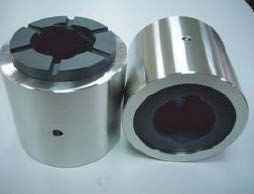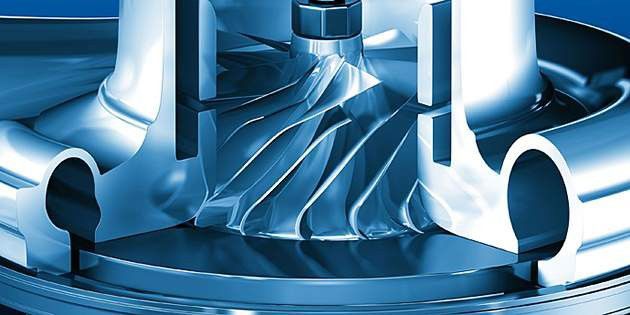High-performance Polyimides Solutions for Battery and Hydrogen Powered Vehicles
Author:
Christoph Berger
Application Development Manager
DuPont de Nemours in Neu-Isenburg (Germany)
Source:
MTZextra (MTZ Magazine)
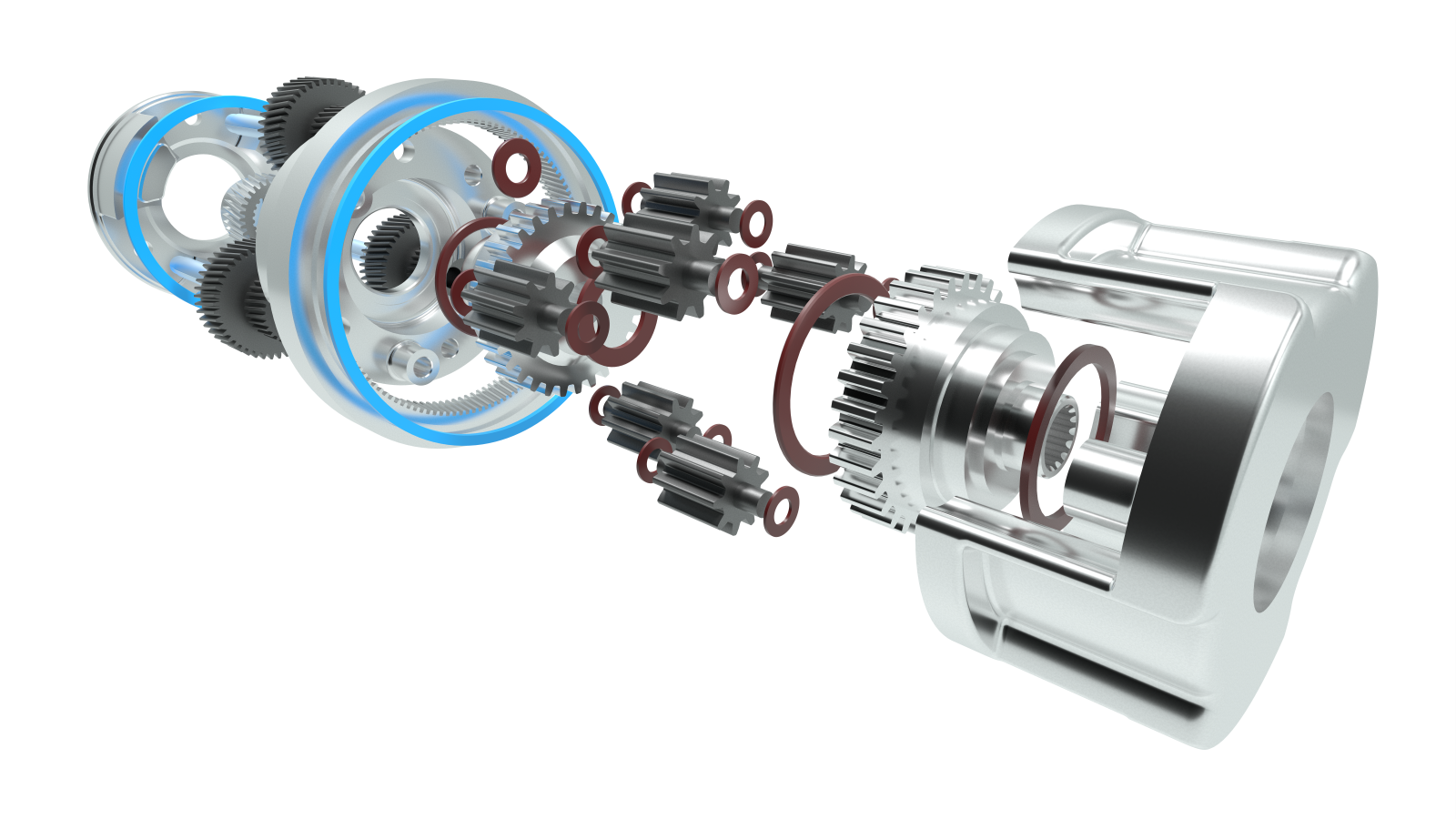
In recent years, electromobility has fundamentally changed the automotive industry and has posed numerous technical challenges, including the growing
demand for higher powertrain efficiency. Frictional resistance in the entire drivetrain, such as in the electric motor, reduction gear- box and differential, must be considered to optimize the vehicle’s performance and driving range. High performance polymers are playing an ever-increasing role in tribological driveline compo- nents, enabling high performance, durability, and efficiency of gearboxes in various applications. This article will take a closer look at two demanding applications: tribologically optimized thrust washers in transmissions and high-performance seals in hydro- gen propulsion systems.
DuPont has developed a novel material that can withstand even the most challenging tribological conditions, such as the combination of high loads and extremely high speeds.
Compared to conventional com- bustion engine vehicles, electric cars tend to be more powerful, with an increasing number of kilowatts, horse- power, and Newton meters. The drive- trains from the motor to the wheels are not only affected by increasing system power but also by the characteristic of the electric drive. FIGURE 1 shows typical torque and power curves in comparison of internal combustion engine and electric motor. Electric motors provide their maximum torque already at low speeds. In contrast to conventional combustion engines, there are no clutch or shift delays in transmitting the torque. As a result, the torque directed through the drivetrain tends to be much more immediate and there- fore higher. Although traditional multiple speed gear gearboxes are no lon- ger employed, manufacturers rely on gear reductions with either one or two stages to enable the electric motor to operate in a more favorable and efficient high-speed range [1].
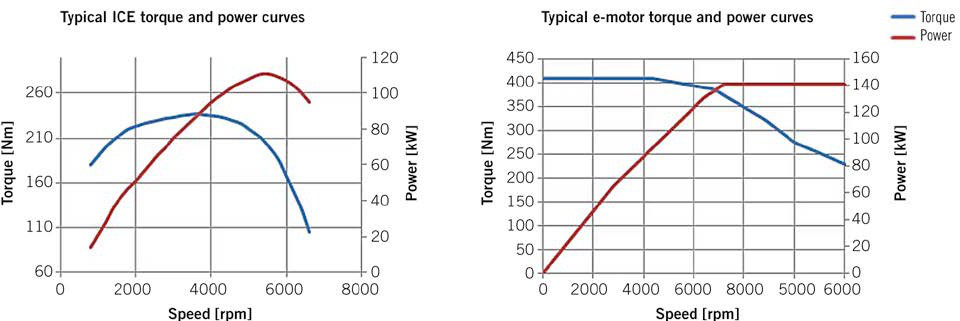
FIGURE 1 Typical torque and power curves (© Victor Barreto)
POLYIMIDE-BASED THRUST WASHERS
The Vespel SP material family is com- monly used for making thrust washers. It is a sintered polyimide which has no observable glass transition tempera- ture or melting point below a decom- position temperature that is well above 400 °C. This unique property is key for friction application where elevated temperature spots can occur during short term boundary lubrication regime. One prominent example are the DIWA gearboxes from Voith with relative rotating speeds of more than 20,000 rpm. In these conditions the lower friction properties of the Vespel Polyimide washers also helped extend the range between successive oil changes by maintaining lower temperature at the friction interface [2]. When there are insufficient levels of lubrication, frictional power losses can generate extremely high temperatures. If unsuitable materials are used, this can result in elevated contact tem-peratures, thermo-mechanical effects, and subsequent thermo-elastic instabi- lities, ultimately leading to excessive local wear [3].
The unique properties of polyimide plastics are primarily due to their che- mical structure, FIGURE 2.

FIGURE 2 Chemical structure of Vespel SP (© DuPont)
Polyimides are equipped with strong covalent bonds in the polymer backbone. Furthermore, there exists intermolecu- lar interaction between the polymer chains providing additional mechanical stability. As a result, polyimides show exceptional resistance to high tempera- tures and long-term deformation, also known as creep.
Vespel S parts are obtained by powder sintering and can be characterized as a thermoset material. In contrast, thermo- plastic polymers are less mechanically stable, especially at elevated tempera- tures, and cannot handle high contact pressures due to their chemical nature.
Due to their mechanical stability under extreme conditions, Vespel anti-friction components can increase efficiency and power density of transmissions. To better understand the high performance of polyimide polymers, results from a comparative tribological thrust washer test are shown in FIGURE 3.

FIGURE 3 Coefficient of friction comparison (© DuPont)
The Coefficient Of Friction (COF) was measured under different lubricating regimes. The pressure was kept constant, and the sliding velocity was increased incrementally up to 27 m/s to simulate the condition of a thrust washer in a planetary gear box. Vespel reached the end of the test while other materials failed prematurely due to seizure, vibration, or an abrupt increase in tem- perature to more than 220 °C.
Another essential parameter to consider when designing and selecting suitable materials for thrust washer applications is the so-called “PV limit”. The PV is the product of surface pressure (P) and the relative speed (V) of the friction components. The PV-limit of a material is a failure point usually manifested by an abrupt increase in the wear rate of the material [4]. Thrust washers made from steel typi- cally have a PV-limit of approximately 1 MPa×m/s [5]. This significantly reduces their use for high-performance applications. Compared to Vespel materials (up to 38 MPa×m/s), all other tested materials showed a significantly lower PV-limit in unlubricated states. The next best competing material in the test showed an almost five times lower PV-limit of ap- proximately 8 MPa×m/s.
However, when oil is present, differ- ent conditions arise. Thrust washers made from phosphor bronze can with- stand PV values of around 16 MPa×m/s in the lubricated environments, whereas Vespel SP-21 grade thrust washers can achieve even higher PV values of up to 40 MPa×m/s. However, with the rise of more severe load and lubrication con- ditions, a new high-PV Vespel grade was developed with a PV limit above 55 MPa×m/s. This made these thrust washers suitable for the most demanding environments. FIGURE 4 showcases the remarkable PV performance of this new grade in comparison to Vespel SP-21 and phosphor bronze.
An eminent example of an increas- ingly demanding application are planetary gearboxes. They are a key element for many modern electric vehicles in order to efficiently transmit high levels of torque and reduce friction within a small installation space.

FIGURE 4 Test results PV-limit in comparison (© DuPont)
Thrust washers are positioned between the planet and the planet gear carrier, FIGURE 5. They absorb axial forces and prevent contact between dynamic and static mating surfaces. Vespel polyimide washers offer advan- tages compared to traditional metallic solutions. They can be manufactured down to a thickness of 0.4 mm, allow- ing for a further miniaturizing of the coaxial gear box design. This in turn helps to reduce the angle of the drive shaft, thereby improving efficiency and NVH (Noise Vibration Harshness) performances and reducing wear. Poly- meric washers are significantly lighter than conventional steel components.
In addition to the reduced installation space requirement, a potential system weight reduction can be achieved. The optimized friction and wear behavior of Vespel can also contribute to a further reduction in CO2 emissions. DuPont Vespel parts can also operate against soft alloys, such as aluminum, which allows for further weight savings.
Vespel polyimide parts do not melt and feature emergency operating pro- perties, so that it can also operate under lean and low viscosity lubrication condition. In addition, the polymeric nature of Vespel thrust washers offers advantageous damping properties, further optimizing the overall NVH system performance. Wear mechanisms greatly differ between metallic and polymeric solutions. Vespel minimizes the risk for adhesive wear, seizure, and fretting, and does not generate abrasive particles. Oil grooves can also be embedded on the surface of the washer to help maintain a constant oil film within the frictional contact area, which can significantly reduce the friction coefficient and the torque losses.
High pressure velocity resistant materials will be key to meet the requirements of advanced gearboxes. High sliding velocities are typically the more critical aspect for gearboxes whereas it is the pressure resistance that makes Vespel shine in sealing functions.
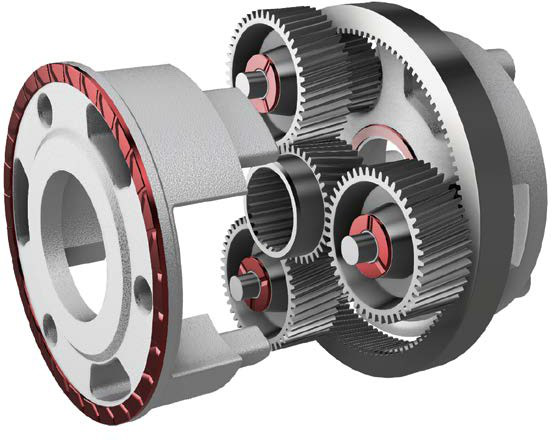
FIGURE 5 Planet gear carrier with Vespel thrust washers (© DuPont)
POLYIMIDE- BASED SEALING MATERIAL FOR HYDROGEN APPLICATIONS
Hydrogen has emerged as a promising candidate for the next generation fuel, due to its ability to store green energy, be transported via natural gas pipelines, and be used in fuel cells as well as incombustion engines. However, applications with exposure to hydrogen require special materials that can resist hydrogen embrittlement and demonstrate low permeability, while also not contaminating the hydrogen. In this context, materials used for sealing play a crucial role in preventing leaks and ensuring system safety. In addition to the new high-PV Vespel grade, co-polymers that have been proven to be well suited for hydrogen applications are available. Vespel SCP-5000 for example, offers excellent resistance to hydrogen and retains its mechanical properties under extreme conditions such as high pressures and ultra-low temperatures. This is of high importance in hydrogen applications, where leaks can have serious consequences either due to the negative Joule-Thomson effect, where temperature increases during the expansion of hydrogen, or due to hydrogen’s ability to ignite in the presence of oxygen (air) via an electrostatic spark. Vespel SCP-5000 shows low permeability to hydrogen as shown in FIGURE 6. It outperforms other materials significantly with a twenty-six times lower hydrogen permeability coefficient than Polyetherether- ketone (PEEK).

FIGURE 6 Hydrogen permeability test result (measured by Kyushu University) (© DuPont)
Another example, where Vespel demonstrates proper sealing performance are on-tank valves in vehicles. These valves must still hold hydrogen safely and reliably, even after millions of cycles, to avoid accidents and ensure operational safety [6]. In contrast to certain types of steel, Vespel does not show signs of hydrogen embrittlement and is not prone to rapid gas decompression. In addition, it remains relatively ductile under cryogenic conditions (-253 °C) whereas other polymers like Polychlorotrifluoroethylene (PCTFE) become brittle.
The mechanical properties of DuPont Vespel SCP-5000 can be summarized as “soft, but strong”: in comparison to steel, Vespel’s low compressive modulus of 5.62 GPa ensures “softness” for sealing properties whereas a compressive stress limit of more than 600 MPa demonstrates “strong” mechanical resilience. These properties translate to good creep resistance over a broad temperature and load range even without the need of reinforcement fillers. These polyimide materials are ideal for critical sealing applications to ensure safe handling of hydrogen including liquified hydrogen over a broad range of conditions.
CONCLUSION
DuPont’s high-performance polyimide-based polymers under the Vespel brand are excellent materials that showcase their strengths across electrified drivetrains and hydrogen-exposed applications. The properties of Vespel polyimides are substantial to bring the efficiency and sustainability of technologies for future mobility forward. Pushing the limits with higher permissible PV limits, Vespel thrust washers will help to further optimize the gearbox performance and working towards further miniaturization of complex gearbox designs. Moreover, the use of polyimides in hydrogen seals contributes to the safety and reliability of hydrogen applications, which will play a key role in green energy storage and distribution. With their unique properties and advanages over other materials, high-performance polyimides are essential to improving the efficiency and sustainability of electromobility and hydrogen technologies.
REFERENCES
- Thoma, F.: E-Antrieb & Mechanik: eine perfekte symbiose. Online: https://www.zf.com/products/de/stories_30784.html, access: November 16, 2023
- Reimer, H.-U.; Zwickel, M.: Verschleißfeste Anlaufscheiben aus Vespel verlängern standzeiten in linienbus-Automatikgetrieben. Online: https://www.innovations-report.de/fachgebiete/materialwissenschaften/bericht-101258/ , access: January 19, 2024
- Bergsetha, E.; Henriksson, M.; Dizdar, s.; sell- gren, U.: Effects of thrust washer bearing surface characteristics on planetary gear train wear. Online: https://www.sciencedirect.com/science/article/abs/pii/S0043164818312675 access: January 19, 2024
- DuPont Vespel s line – Design Handbook. Online: https://www.dupont.com/content/dam/dupont/amer/us/en/vespel/public/documents/en/DuPont%20Vespel%C2%AE%20S%20Line%20Design%20Handbook.pdf
- schaeffler Technologies AG & Co. KG, Metal/ Polymer Composite Plain Bearings. Online: https://www.schaeffler.com/remotemedien/media/_shared_media/08_media_library/01_publications/schaeffler_2/tpi/downloads_8/tpi_211_de_en.pdf
- seitzValve: Hydrogen Pressure solenoid Valve. Online: https://hyfindr.com/hydrogen-pressure-solenoid-valve/
The author would like to thank Ruth Jackowiak and Dr. Peter Ohlendorf for their valuable support in creating this article.
Ideas & innovations
Powered by a broad product portfolio and state-of-the-art expertise, we help our partners meet the critical industry demands of the electrical and electronics market.
Featured resources
Literature
Vespel® CR-6100 Compression Molded Parts and Shapes
Vespel® CR-6100 Bearings for API Separators
Vespel® CR-6100 Pipeline Pump Component Boost Efficiency
DuPont™ Vespel® Parts for Hydrogen Energy
Case Studies
Vespel® Case Rings Boost Pump Efficiency and Safety
Articles
Additional links
